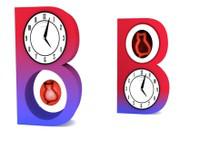 Collisions of electrons and positrons can create B
meson particles in an entangled state. I will explain how the
BABAR
experiment, based in California,
has applied the associated Einstein–Podolsky– Rosen effect to study differences
between matter and antimatter known as CP violation, as well as how it has used
the effect to observe the “quantum arrow of time”. The Belle II/SuperKEKB
facility that is currently being commissioned in Japan will extend these
studies and will be sensitive to new physics at energies well above those
available at CERN’s Large Hadron Collider (LHC) in Geneva. I will describe how
it will do so and discuss the hint for new physics published by
BABAR
that has been supported by
recently reported measurements at the Belle and LHCb experiments.
Collisions of electrons and positrons can create B
meson particles in an entangled state. I will explain how the
BABAR
experiment, based in California,
has applied the associated Einstein–Podolsky– Rosen effect to study differences
between matter and antimatter known as CP violation, as well as how it has used
the effect to observe the “quantum arrow of time”. The Belle II/SuperKEKB
facility that is currently being commissioned in Japan will extend these
studies and will be sensitive to new physics at energies well above those
available at CERN’s Large Hadron Collider (LHC) in Geneva. I will describe how
it will do so and discuss the hint for new physics published by
BABAR
that has been supported by
recently reported measurements at the Belle and LHCb experiments.
See poster: pdf format

